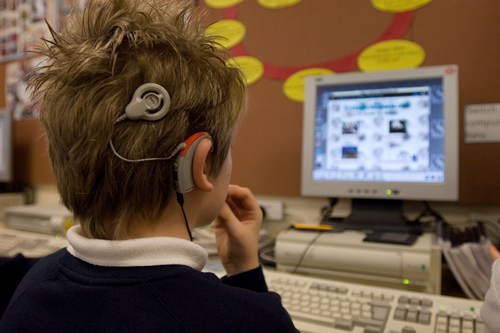New guidance increases cochlear implant eligibility
Published Date: 04 Jan 2019Today the National Institute for Health and Care Excellence (NICE) published new guidance on who should be considered a candidate for cochlear implants.

Background
The previous guidance was issued in 2009. The guidance forms part of the Technical Appraisal portfolio and as such the NHS is expected to make funding available for anyone who meets the criteria and wishes to have the procedure.
The previous guidance said that children could be offered two cochlear implants if their hearing was worse than 95 dB (profoundly deaf) at 2000 and 4000 Hz (the higher frequencies which are considered most important for speech understanding), if hearing aids weren't able to provide sufficient benefit to be able to understand speech.
We felt that the previous candidacy criteria was dated and no longer fit for purpose. The UK had slipped into a position where we had one of the highest candidacy requirements in the developed world.
Recent research found that cochlear implants would be appropriate for children with lower hearing thresholds than the current guidelines and this meant that many children with profound deafness and cochlear implants were hearing better than children with severe deafness and hearing aids.
Whilst NICE guidance should only be seen as guidance and clinical judgement should also be applied, in practice NHS England refused to fund candidates outside of the identified criteria. This left a significant number of frustrated families (and professionals) who knew of the potential benefits but were unable to access services due to funding restrictions.
We got involved in a research Consensus Group and worked with both the British Cochlear Implant Group (BCIG) and the Action Group on Adult Cochlear Implants so that there is a uniform response to NICE from the sector.
New guidance
Now says that children with severe to profound deafness (defined as hearing only sounds that are louder than 80 dB HL at 2 or more frequencies of 500 Hz, 1,000 Hz, 2,000 Hz, 3,000 Hz and 4,000 Hz) in both ears, and who do not receive adequate benefit from hearing aids are candidates. Adequate benefit is defined as speech, language and listening skills appropriate to age, developmental stage and cognitive ability.
The National Deaf Children’s Society’s position
We thoroughly welcome these changes. NICE haven't gone as far as we would have really liked (such as providing candidature for children with profound unilateral deafness or children with aidable hearing in one ear but not the other) but it is a massive improvement and means we won't be behind many European countries as now.
However, the National Deaf Children’s Society’s work does not end here. The new candidature means that many more children now meet the criteria for cochlear implant assessment for already stretched services with ongoing NHS funding pressures. We will be working hard to ensure that services are adequately funded, available, and of good quality for every family that needs them.
If you need any further information or help and support contact our Helpline on 0808 800 8880 (calls are free from all landlines and major mobiles companies), live chat or [email protected].
